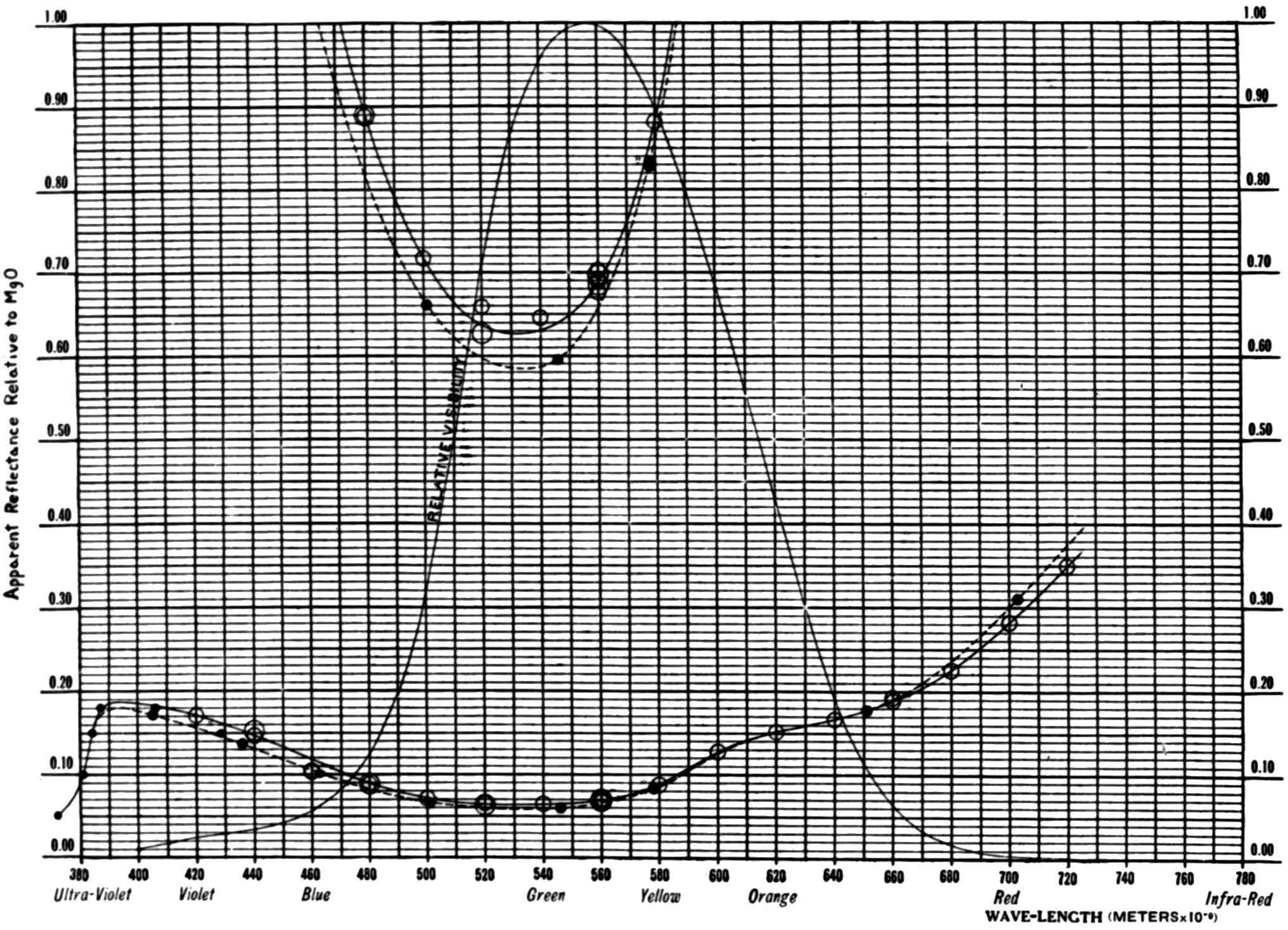592
K. S. GIBSON AND D. NICKERSON
addition to the usual precautions to eliminate stray-light, wave-length, and slit-width errors, the order of wave-lengths chosen for measurement was such as to detect any change in the sample during measurement, so that if such change occurred the data could be corrected to apply as nearly as possible to the sample as it was at the start of the measurements. For these measurements and for those with the other instruments, small samples were cut for measurement from the large 8×8-inch sheets. A complete set of measurements was made on each of the 70 samples by W. Greenberg, research associate placed at the Bureau for this purpose by the Munsell Research Laboratory. Check measurements were later made by other observers, H. J. McNicholas, P. Rudnick and W. Greenberg, on different samples cut from the same large sheets. Such checks were made particularly for samples which changed during the first set of measurements.

Fig. 1. Work sheet of spectrophotometric data and adopted values for Munsell Atlas sample RP 3/6, as used in National Bureau of Standards Test No. 46045 (1926 data). This is typical of the work sheets used for each of the 70 samples of that test. Key: open circles, diffuse-normal visual data; larger closed circles, 45°-normal visual data; smaller closed circles, 45°-normal photographic data; continuous line, adopted diffuse-normal data; dashed line, adopted 45°-normal data: values below 0.10 are also magnified by 10.
45° illumination, normal reflection, visual method
The Martens photometer with filters was used with improvised equipment to obtain these data. Two light sources were used. The first was a quartz-mercury arc, with filters isolating in turn the light at 578 (577.0+579.1), 546.1, 435.8, and 405 (404.7+407.8) m
μ. The efficiency of the filters was such that the light transmitted by the filter from the next most luminous line was not more than one percent of the light nominally being used. In addition, the red light from the arc was absorbed by a blue-green glass where the filter would otherwise transmit this. Plate glass prevented radiant energy of wave-length less than 320 m
μ from reaching the sample. The second source was an incandescent lamp with

